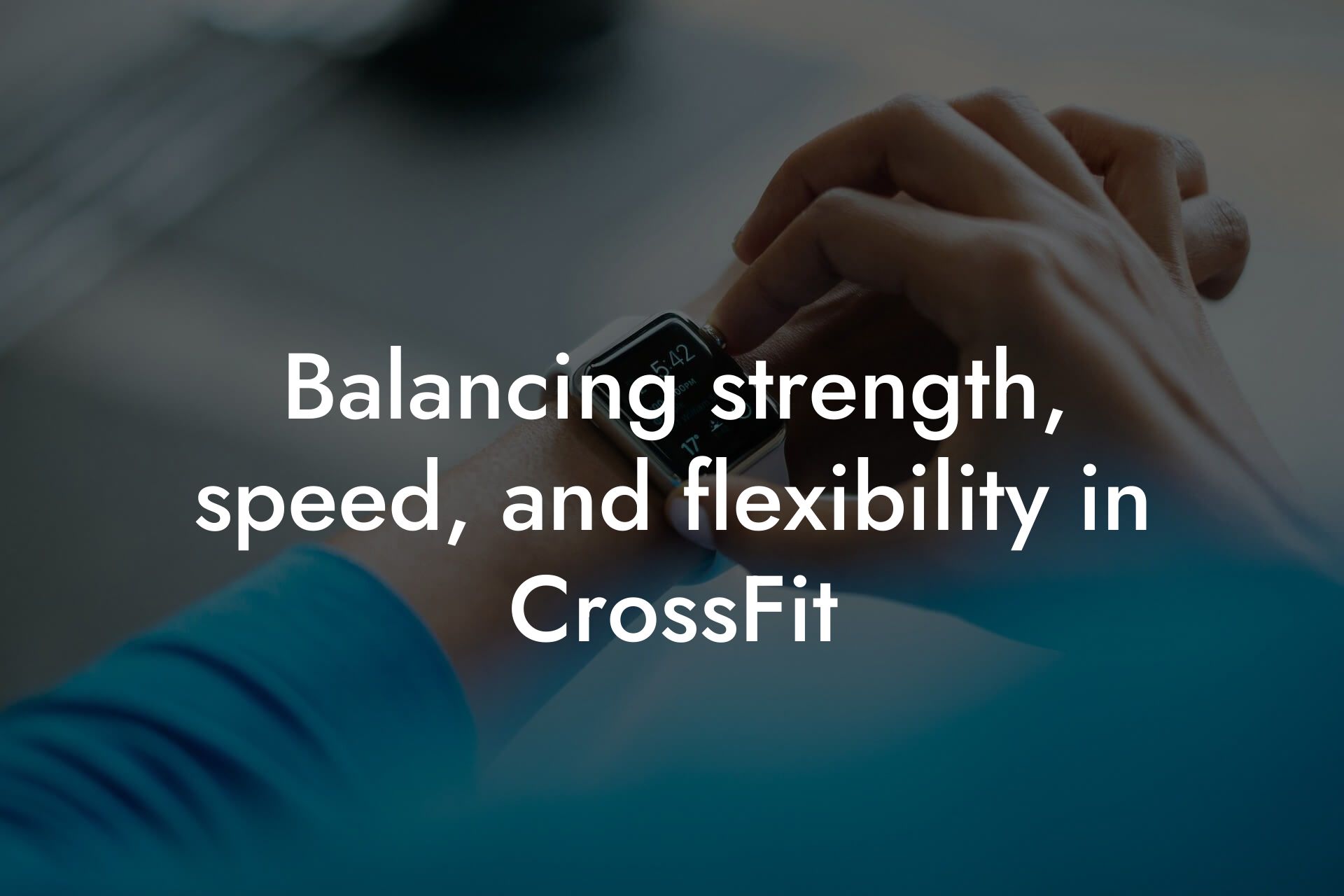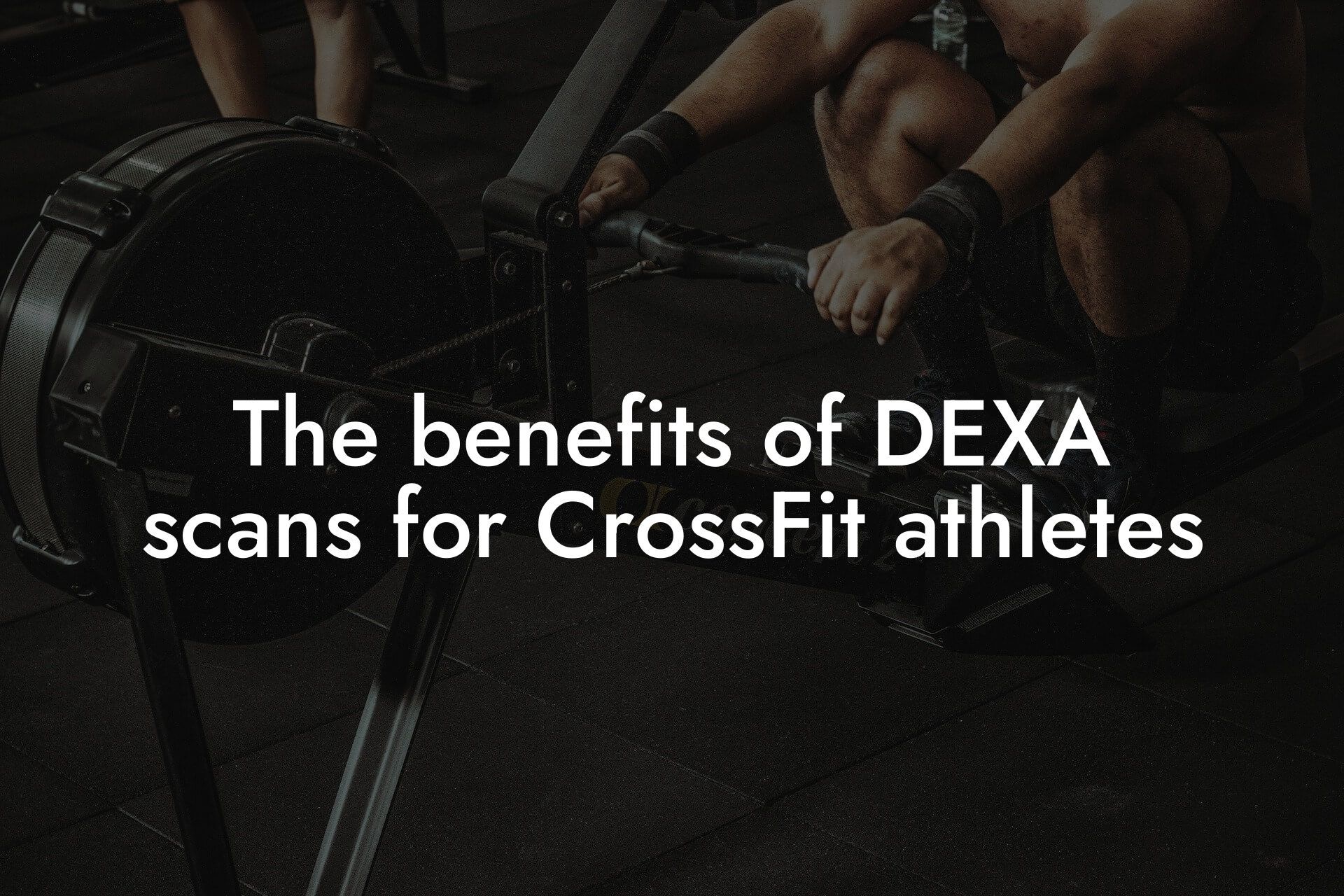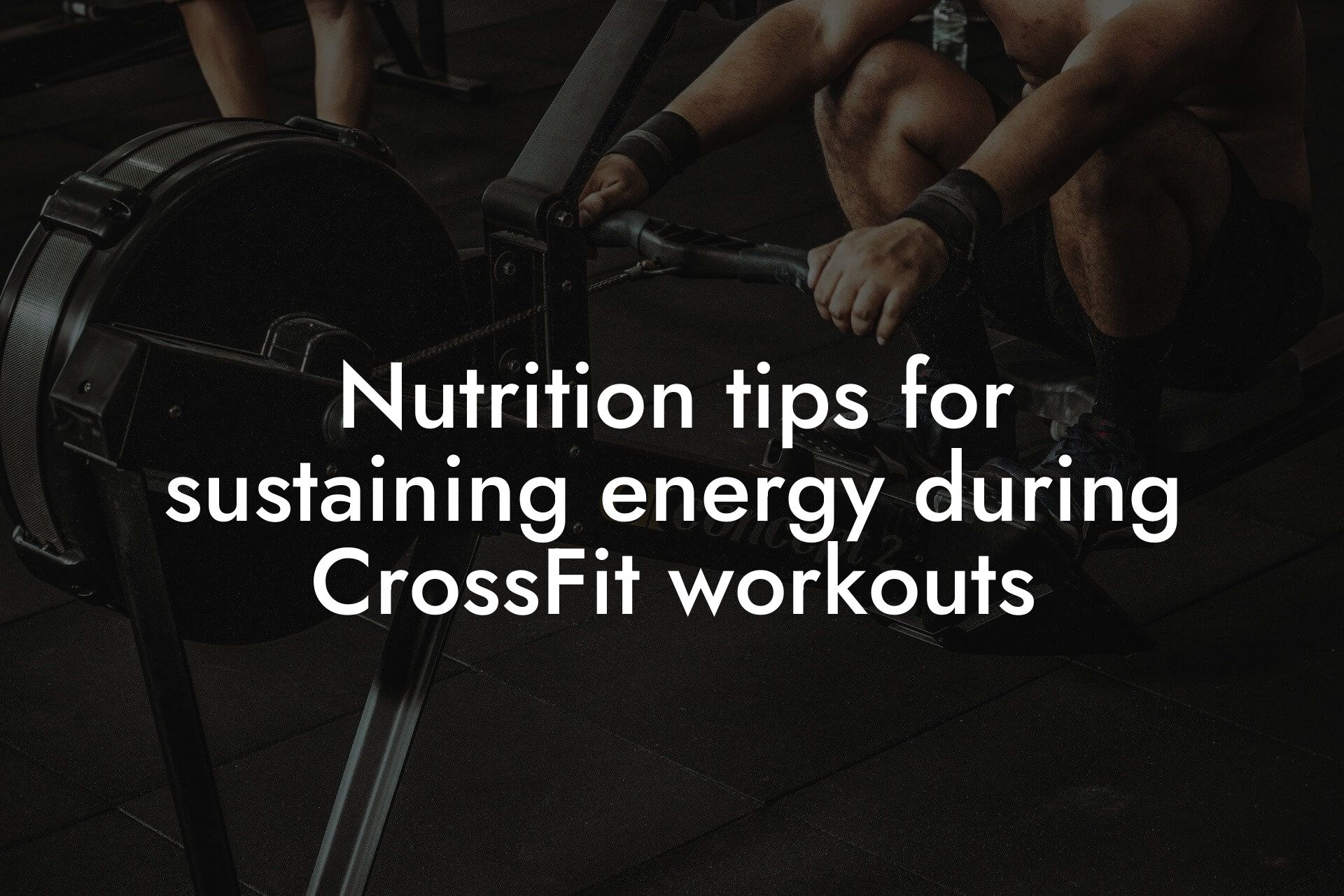As a high-earning professional, you understand the importance of physical appearance and overall health. When it comes to CrossFit, having a deep understanding of body composition is crucial for optimal performance. In this article, we'll delve into the world of body composition and its impact on CrossFit performance, providing you with the knowledge you need to take your fitness to the next level.
Table of Contents
What is Body Composition?
Body composition refers to the percentage of fat mass and lean mass in your body. Lean mass includes muscle, bone, water, and other non-fat tissues, while fat mass is the amount of adipose tissue in your body. A healthy body composition is essential for overall health, athletic performance, and physical appearance. In CrossFit, having a balanced body composition can significantly impact your performance, recovery, and overall success.
The Importance of Body Fat Percentage in CrossFit
Body fat percentage is a critical aspect of body composition in CrossFit. Excess body fat can hinder performance, increase the risk of injury, and negatively impact overall health. A high body fat percentage can lead to:
- Reduced power output and endurance
- Decreased speed and agility
- Increased risk of injury, particularly in joints and muscles
- Impaired recovery and delayed muscle growth
On the other hand, having a low body fat percentage can also be detrimental to CrossFit performance. Insufficient body fat can lead to:
- Reduced energy stores and endurance
- Impaired hormone production and recovery
- Increased risk of injury and muscle loss
The Role of Lean Mass in CrossFit Performance
Lean mass, which includes muscle, bone, and other non-fat tissues, plays a vital role in CrossFit performance. Having a sufficient amount of lean mass is essential for:
- Generating power and strength
- Enhancing endurance and recovery
- Supporting bone density and reducing the risk of osteoporosis
- Improving overall athletic performance and physique
How Body Composition Affects CrossFit Workouts
Body composition has a significant impact on CrossFit workouts. For example:
- High-intensity workouts, such as sprinting and weightlifting, require a high percentage of lean mass to generate power and speed.
- Endurance-based workouts, such as running and rowing, require a balanced body composition to maintain energy stores and reduce fatigue.
- Bodyweight exercises, such as pull-ups and push-ups, require a high percentage of lean mass to generate strength and control.
Assessing Body Composition for CrossFit Performance
Accurately assessing body composition is crucial for optimizing CrossFit performance. Traditional methods, such as body mass index (BMI) and skinfold measurements, have limitations and can be inaccurate. Dual-energy X-ray absorptiometry (DEXA) scans, like those offered by Tano Performance Group, provide a comprehensive and accurate assessment of body composition, including:
- Body fat percentage
- Lean mass
- Bone density
- Visceral fat area
Optimizing Body Composition for CrossFit Performance
Once you have a clear understanding of your body composition, you can begin to optimize it for CrossFit performance. This may involve:
- Creating a personalized nutrition plan to support lean mass growth and fat loss
- Developing a strength and conditioning program to enhance power, speed, and endurance
- Incorporating recovery techniques, such as stretching and foam rolling, to reduce muscle soreness and improve flexibility
- Monitoring progress through regular DEXA scans and adjusting your training and nutrition plan accordingly
In conclusion, body composition plays a critical role in CrossFit performance. Understanding your body composition and its impact on your workouts is essential for optimizing your training, nutrition, and recovery. By incorporating regular DEXA scans and personalized training and nutrition plans, you can take your CrossFit performance to the next level and achieve your fitness goals. At Tano Performance Group, we're committed to helping high-earning professionals like you achieve optimal body composition and unlock their full potential.
Frequently Asked Questions
What is body composition, and why is it important in CrossFit?
Body composition refers to the percentage of fat and lean mass in your body. In CrossFit, body composition plays a critical role in performance, as it affects your power-to-weight ratio, mobility, and overall athleticism. A healthy body composition can improve your performance, reduce injury risk, and enhance overall physical fitness.
How does body fat percentage affect CrossFit performance?
Excess body fat can negatively impact CrossFit performance by increasing your overall weight, reducing power output, and decreasing mobility. On the other hand, a leaner body composition can improve your power-to-weight ratio, allowing you to move more efficiently and effectively.
What is the ideal body fat percentage for CrossFit athletes?
The ideal body fat percentage for CrossFit athletes varies depending on individual goals and needs. Generally, a body fat percentage between 10-15% for men and 15-20% for women is considered optimal for CrossFit performance.
How does lean mass affect CrossFit performance?
Lean mass, including muscle mass, bone density, and connective tissue, plays a crucial role in CrossFit performance. Adequate lean mass can improve strength, power, and endurance, allowing you to perform complex movements and exercises with greater efficiency.
What is the relationship between body composition and injury risk in CrossFit?
Research suggests that athletes with higher body fat percentages are more prone to injury, particularly in the lower back, knees, and shoulders. Conversely, athletes with a leaner body composition tend to have a lower risk of injury.
How can I measure my body composition for CrossFit?
There are several methods to measure body composition, including dual-energy X-ray absorptiometry (DXA), hydrostatic weighing, and skinfold measurements. Consult with a qualified healthcare professional or registered dietitian to determine the best method for your needs.
What is the role of nutrition in body composition for CrossFit?
Nutrition plays a critical role in body composition for CrossFit athletes. A balanced diet that includes adequate protein, healthy fats, and complex carbohydrates can support lean mass growth and fat loss, ultimately improving performance.
How does macronutrient ratio affect body composition for CrossFit?
The optimal macronutrient ratio for CrossFit athletes varies depending on individual needs and goals. Generally, a ratio of 2-3 grams of protein per kilogram of body weight, 2-3 grams of carbohydrates per kilogram of body weight, and 0.5-1 gram of healthy fats per kilogram of body weight can support lean mass growth and fat loss.
What is the importance of hydration in body composition for CrossFit?
Adequate hydration is essential for optimal body composition in CrossFit athletes. Proper hydration can improve muscle function, reduce inflammation, and support fat loss and lean mass growth.
How can I improve my body composition for CrossFit?
To improve your body composition for CrossFit, focus on a balanced diet, regular exercise, and adequate rest and recovery. Consult with a qualified healthcare professional or registered dietitian to develop a personalized plan tailored to your needs and goals.
What is the role of sleep and recovery in body composition for CrossFit?
Sleep and recovery play a critical role in body composition for CrossFit athletes. Adequate sleep and recovery can improve muscle function, reduce inflammation, and support fat loss and lean mass growth.
How can I track my body composition progress for CrossFit?
Regularly tracking your body composition progress can help you stay motivated and adjust your training and nutrition plan as needed. Use a combination of measurements, such as body fat percentage, weight, and circumference measurements, to track your progress.
What are the benefits of improving body composition for CrossFit?
Improving your body composition for CrossFit can enhance your overall performance, reduce injury risk, and improve your overall physical fitness and appearance.
How long does it take to see improvements in body composition for CrossFit?
The time it takes to see improvements in body composition for CrossFit varies depending on individual factors, such as starting point, training, and nutrition. Generally, noticeable improvements can be seen within 6-12 weeks of consistent training and nutrition.
Can I improve my body composition for CrossFit without sacrificing performance?
Yes, it is possible to improve your body composition for CrossFit without sacrificing performance. Focus on making sustainable lifestyle changes, such as a balanced diet and regular exercise, rather than extreme or rapid changes.
What are the common mistakes people make when trying to improve their body composition for CrossFit?
Common mistakes people make when trying to improve their body composition for CrossFit include extreme dieting, overtraining, and neglecting rest and recovery. Avoid these mistakes by focusing on sustainable lifestyle changes and consulting with a qualified healthcare professional or registered dietitian.
How does body composition affect mental performance in CrossFit?
Body composition can have a significant impact on mental performance in CrossFit. A healthy body composition can improve confidence, reduce anxiety, and enhance overall mental toughness.
Can I improve my body composition for CrossFit at any age?
Yes, it is possible to improve your body composition for CrossFit at any age. However, it's essential to consider age-related factors, such as hormone levels and metabolism, when developing a training and nutrition plan.
What is the role of genetics in body composition for CrossFit?
Genetics play a role in body composition for CrossFit, but they are not the sole determining factor. Focus on making sustainable lifestyle changes, such as a balanced diet and regular exercise, to improve your body composition regardless of genetic factors.
How can I maintain my body composition for CrossFit during periods of injury or illness?
Maintaining your body composition for CrossFit during periods of injury or illness requires careful planning and attention to nutrition and rest. Consult with a qualified healthcare professional or registered dietitian to develop a personalized plan tailored to your needs and goals.
What are the benefits of working with a coach or trainer to improve body composition for CrossFit?
Working with a coach or trainer can provide personalized guidance, support, and accountability, helping you to improve your body composition for CrossFit more efficiently and effectively.
How can I stay motivated to improve my body composition for CrossFit?
Staying motivated to improve your body composition for CrossFit requires setting realistic goals, tracking progress, and celebrating small victories along the way. Surround yourself with a supportive community, and consider working with a coach or trainer for added motivation.
What are the common myths about body composition for CrossFit?
Common myths about body composition for CrossFit include the idea that you need to be extremely lean to be competitive, or that you can achieve optimal body composition through extreme dieting or exercise. Avoid these myths by focusing on sustainable lifestyle changes and consulting with a qualified healthcare professional or registered dietitian.
Here are some related articles you might love...
- Balancing strength, speed, and flexibility in CrossFit
- The benefits of DEXA scans for CrossFit athletes
- Nutrition tips for sustaining energy during CrossFit workouts
- Recovery techniques for CrossFit athletes after intense WODs
- The role of muscle mass in CrossFit endurance and power
- Reducing body fat for better performance in CrossFit competitions
- Off-season training strategies for CrossFit athletes
- Bone density and injury prevention in CrossFit
- Strength and conditioning programs for CrossFit athletes
Zak Faulkner
Zak Faulkner is a leading authority in the realm of physical health and body composition analysis, with over 15 years of experience helping professionals optimise their fitness and well-being. As one the experts behind Tano Performance Group, Zak has dedicated his career to providing in-depth, science-backed insights that empower clients to elevate their physical performance and overall health.
With extensive knowledge of DEXA technology, Zak specializes in delivering comprehensive body assessments that offer precise data on body fat, muscle mass, bone density, and overall physique. His expertise enables individuals to make informed decisions and achieve their fitness goals with accuracy and confidence. Zak’s approach is rooted in a deep understanding of human physiology, combined with a passion for helping clients unlock their full potential through personalised strategies.
Over the years, Zak has earned a reputation for his commitment to excellence, precision, and client-focused service. His guidance is trusted by top professionals who demand the best when it comes to their health. Whether advising on fitness programs, nutritional strategies, or long-term wellness plans, Zak Faulkner’s insights are a valuable resource for anyone serious about taking their health and fitness to the next level.
At Tano Performance Group, Zak continues to lead our Content Team revolutionising how professionals approach their physical health, offering unparalleled expertise that drives real results.




